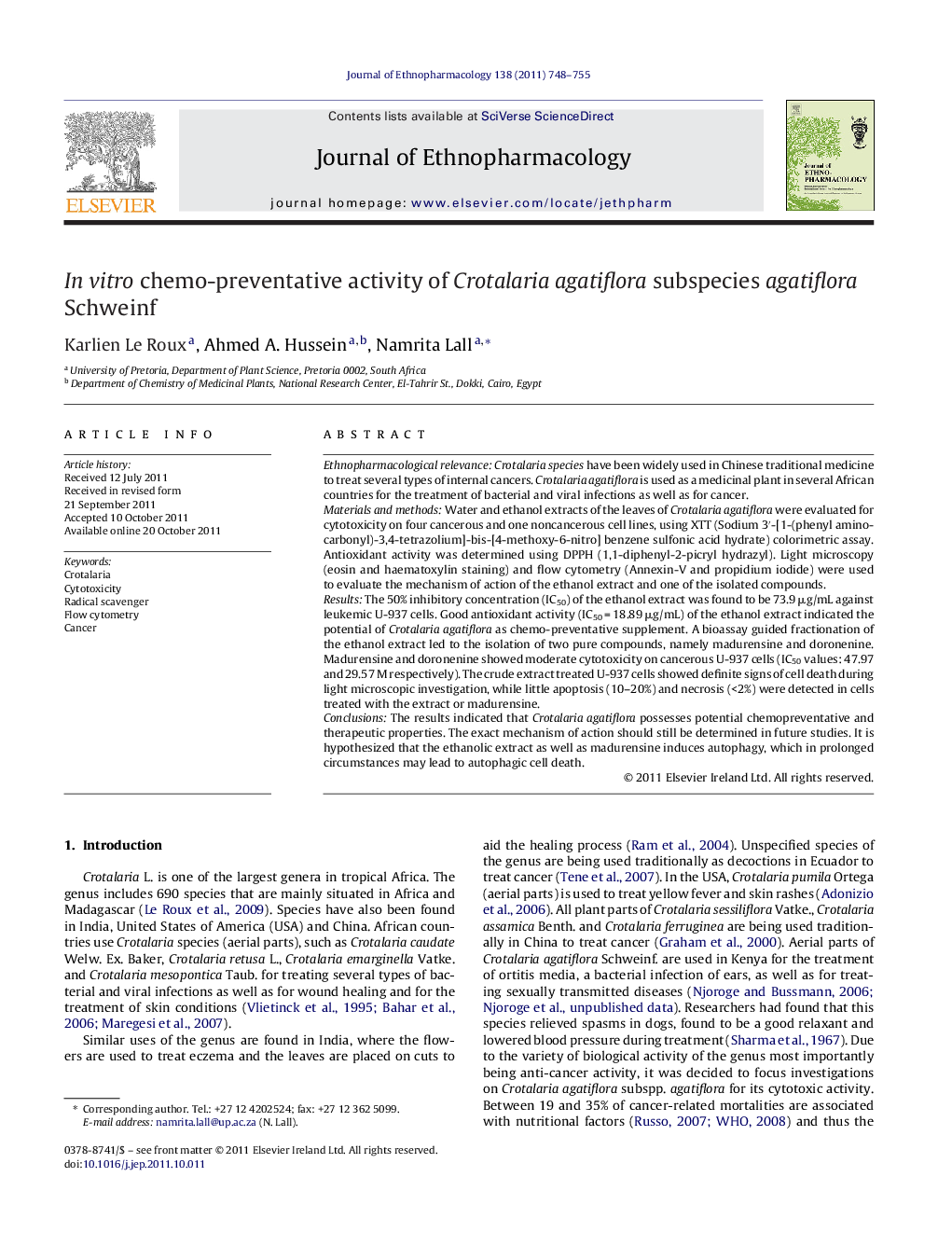| Article ID | Journal | Published Year | Pages | File Type |
|---|---|---|---|---|
| 5839322 | Journal of Ethnopharmacology | 2011 | 8 Pages |
Ethnopharmacological relevanceCrotalaria species have been widely used in Chinese traditional medicine to treat several types of internal cancers. Crotalaria agatiflora is used as a medicinal plant in several African countries for the treatment of bacterial and viral infections as well as for cancer.Materials and methodsWater and ethanol extracts of the leaves of Crotalaria agatiflora were evaluated for cytotoxicity on four cancerous and one noncancerous cell lines, using XTT (Sodium 3â²-[1-(phenyl amino-carbonyl)-3,4-tetrazolium]-bis-[4-methoxy-6-nitro] benzene sulfonic acid hydrate) colorimetric assay. Antioxidant activity was determined using DPPH (1,1-diphenyl-2-picryl hydrazyl). Light microscopy (eosin and haematoxylin staining) and flow cytometry (Annexin-V and propidium iodide) were used to evaluate the mechanism of action of the ethanol extract and one of the isolated compounds.ResultsThe 50% inhibitory concentration (IC50) of the ethanol extract was found to be 73.9 μg/mL against leukemic U-937 cells. Good antioxidant activity (IC50 = 18.89 μg/mL) of the ethanol extract indicated the potential of Crotalaria agatiflora as chemo-preventative supplement. A bioassay guided fractionation of the ethanol extract led to the isolation of two pure compounds, namely madurensine and doronenine. Madurensine and doronenine showed moderate cytotoxicity on cancerous U-937 cells (IC50 values: 47.97 and 29.57 M respectively). The crude extract treated U-937 cells showed definite signs of cell death during light microscopic investigation, while little apoptosis (10-20%) and necrosis (<2%) were detected in cells treated with the extract or madurensine.ConclusionsThe results indicated that Crotalaria agatiflora possesses potential chemopreventative and therapeutic properties. The exact mechanism of action should still be determined in future studies. It is hypothesized that the ethanolic extract as well as madurensine induces autophagy, which in prolonged circumstances may lead to autophagic cell death.
Graphical abstractDownload high-res image (205KB)Download full-size image
